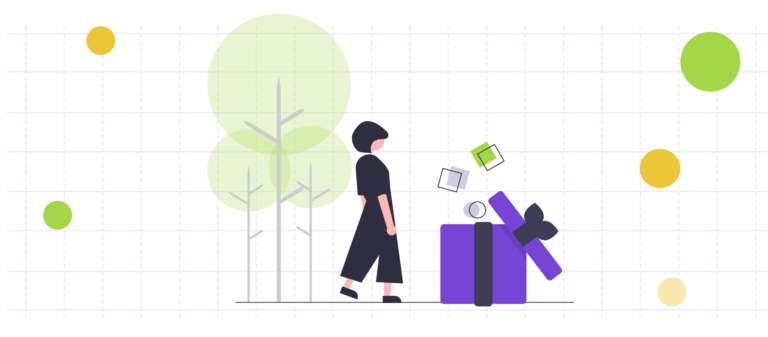How to Calculate Your Nonprofit’s Donor Lifetime Value

Finding and attracting new donors might seem like the only way to boost your nonprofit’s revenue. But take time to crunch some numbers. You’ll find that of all key performance indicators (KPI), the best sign of your organization’s long-term financial health is a high Donor Lifetime Value (LTV or Donor LTV) amongst your recurring donors.
We know that retaining donors is the best way to spend less budget on acquiring donations, with loyal recurring contributors giving up to four times more than one-time donors. So, your best strategy has to include understanding your best donors better to make sure that you’re meeting their needs. And you can do it quickly and easily by incorporating LTV into your planning process.
But what is LTV exactly? Let’s take a look.
What is Donor Lifetime Value?
Donor Lifetime Value (LTV) is the average measure of how much your donors will contribute to your nonprofit organization, starting with their first donation and lasting until the moment they stop giving.
While it’s not an exact number, it offers a good idea of what kind of fundraising revenue you can expect to collect over the long term, as well as the value of contributions you may receive from similar donors in the future.
Why Does Donor Lifetime Value Matter?
LTV gives you a deeper understanding of the types of donors you have supporting your organization. It informs the strategies you use to acquire, nurture, and retain your donors. Donors who give small amounts every month are likely to benefit from different communication strategies than those who write a big check every year.
Donor LTV is an important metric to pay attention to if you want to increase recurring donations. Receiving recurring donations is one of the best ways to boost fundraising revenue without spending too much of your already strained budget. After all, the acquisition cost for recurring donors is low compared to finding one-time donors relative to the amounts they give.
But how does this KPI help you, specifically? Next, we’ll take a look at four ways LTV can make your work easier.
4 Benefits of Measuring Donor Lifetime Value
1. Assists Nonprofit Budget Decision-Making Process
LTV gives nonprofit executive directors and leaders a baseline from which they can make educated guesses and make budgeting decisions for their organizations. Such decisions may include how much to spend on acquiring different types of donors based or how much investment needs to go toward donor retention.
It also gives them a robust and data-backed foundation when justifying strategies and tactics to stakeholders and board members, who are tasked with ensuring that organizations make the right decisions.
2. Guides Donor Stewardship
LTV helps development coordinators and fundraisers apportion their donor stewardship efforts and resources toward the donors who are likely to contribute the most overall. This often means achieving an ideal balance between seeking out large one-time donors and smaller donors who are more likely to give for years to come.
If LTV measurement for different groups reveals shortcomings in specific areas, you can increase stewardship efforts to even out the numbers.
3. Aids Donor Segmentation
Segmentation is the process of grouping donors based on specific attributes or giving histories.
LTV is an excellent segment for groups in your contact list. With such a segment, you can better target your communications to the specific needs of donors who are likely to give more over the long term. You can also boost your nurturing efforts for those who are at risk of lapsing early.
4. Increase Retention Rate
By calculating your donor LTV, you’ll learn the average amount of time a donor is likely to keep giving to your organization. This information can help you understand how to direct more resources and effort into retaining donors based on their LTV.
How to Calculate the Lifetime Value of a Donor (Donor LTV)
Donor LTV is more of an estimate than an exact calculation, so it’s more helpful to think of it as the average lifetime value of all of your donors or a discrete donor segment. You can calculate LTV for individual donors, but it’s more constructive to focus on donor segments.
To calculate LTV for your whole organization or a segment, use this equation:
Average Donor Lifespan x Average Donation x Donor Frequency = Donor Lifetime Value
Easy right? But to make it crystal clear, let’s have a quick look at the factors used to determine donor lifetime value.
1. Donor Lifespan
Donor Lifespan is an estimate since there is no way to know exactly when any given donor or group of donors will stop giving. Most nonprofits use ten years as a baseline, while some use the historical average of how long lapsed donors stayed with the organization to predict how long donors will spend with them.
2. Average Donation
This one is straightforward: divide the total donations received from a group of donors by the number of donations made.
3. Donor Frequency
Donor frequency is the total number of donations to your nonprofit made in a period divided by the total number of donors in that period.
Once you plug in the numbers, the resulting figure is the dollar amount you can expect to receive over the average lifespan of your contact database or segment.
How to Segment Donors using Donor LTV
Now that you understand why LTV is essential to your success and how to calculate this valuable metric, it’s time to look at how to use your newfound information to secure a bright and impactful future for your organization.
Here are three ways to use LTV to create useful segments that can inform your planning, strategies, and tactics.
1. LTV + Giving Level
Create segments that incorporate LTV and gift amount or gift frequency to identify donors who may benefit from different types of campaigns. For example, a segment of donors with high LTV and low gift frequency are prime targets for a recurring donation campaign, with the goal of increasing the number of donations they make in a given period.
Likewise, a donor segment with high giving frequency, and low gift amount but high LTV could be the ideal audience for a campaign seeking to increase donation amounts by a small percentage, which of course, adds up over time.
2. LTV + Demographics
Calculating LTV for donors living in certain geographic areas, in specific age groups, or with different income levels can help you set expectations and goals for campaigns while targeting the right groups with their ideal messaging.
If you know that LTV is low in donors between the ages of 18 and 30 years old, you may decide to spend more effort on the 31 to 40 demographic instead. Conversely, if you identify a segment with high income but low LTV, it’s time to start increasing the amounts you ask for.
3. LTV + Channel
With the availability of diverse forms of communication in the modern age, donors tend to develop a preference for messaging and interaction via specific channels, whether it’s email, social media, or the traditional phone call or snail mail. Donors usually also prefer to give through one medium, such as via credit card on a website or by issuing a check.
Create segments using LTV and data points on donors’ channel preferences to guide how you contact and solicit these donors. If you know that LTV for Facebook users is low, it might be time to abandon that channel altogether, or you may decide to hire a social media coordinator who really knows how to make your campaigns go viral. Likewise, if you discover that LTV is high amongst direct mail contacts, maybe it’s time to prioritize your postal efforts.
Or You Can Use Keela
While there are people who love poring over spreadsheets, do you really have time for that kind of detailed, error-prone work? Probably not.
With Keela, you can automatically segment donors based on their giving histories and behaviors and estimate the LTV for each segment. Then, with the insight provided by Keela Intelligence, you can be automatically alerted to the best times to ask for donations, run campaigns, and more.
Offloading some of your workloads to Keela also has the added benefit of freeing you up to do more of the things that you are best at, like building lasting donor relationships.
.svg)



